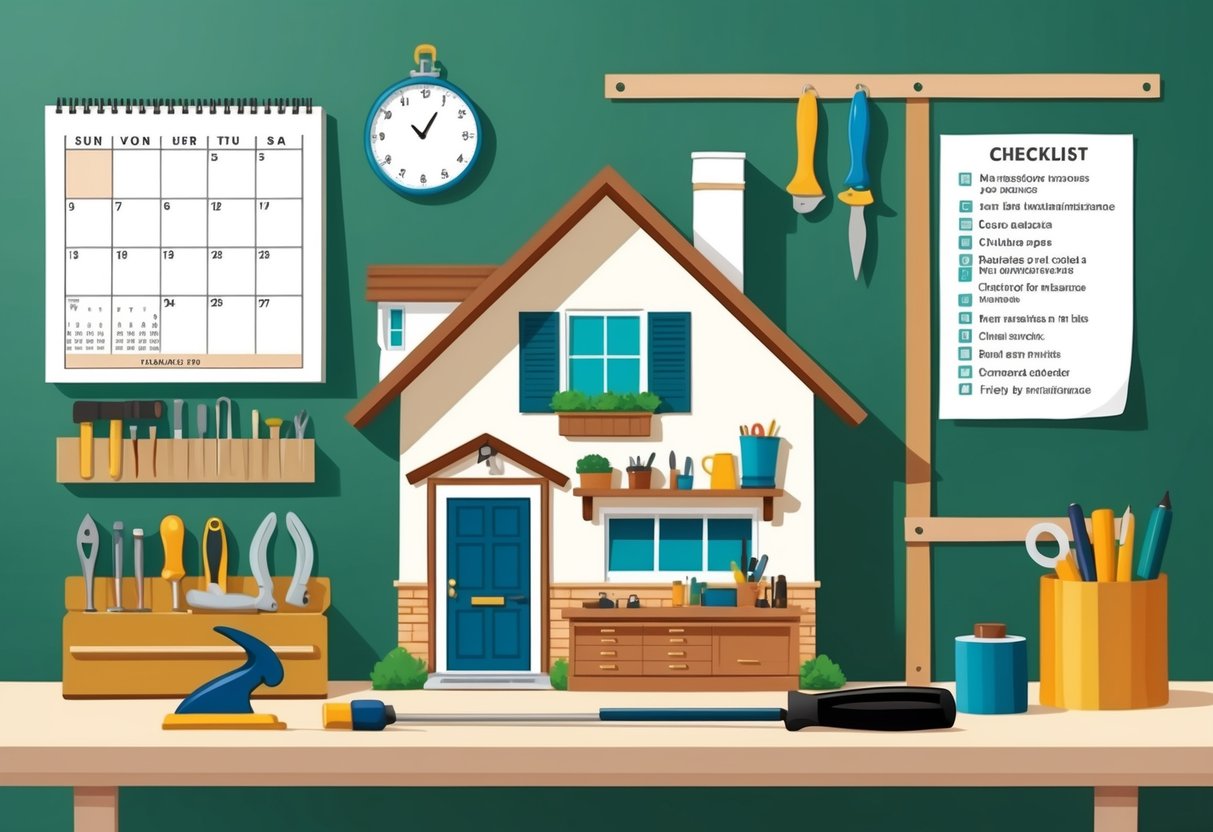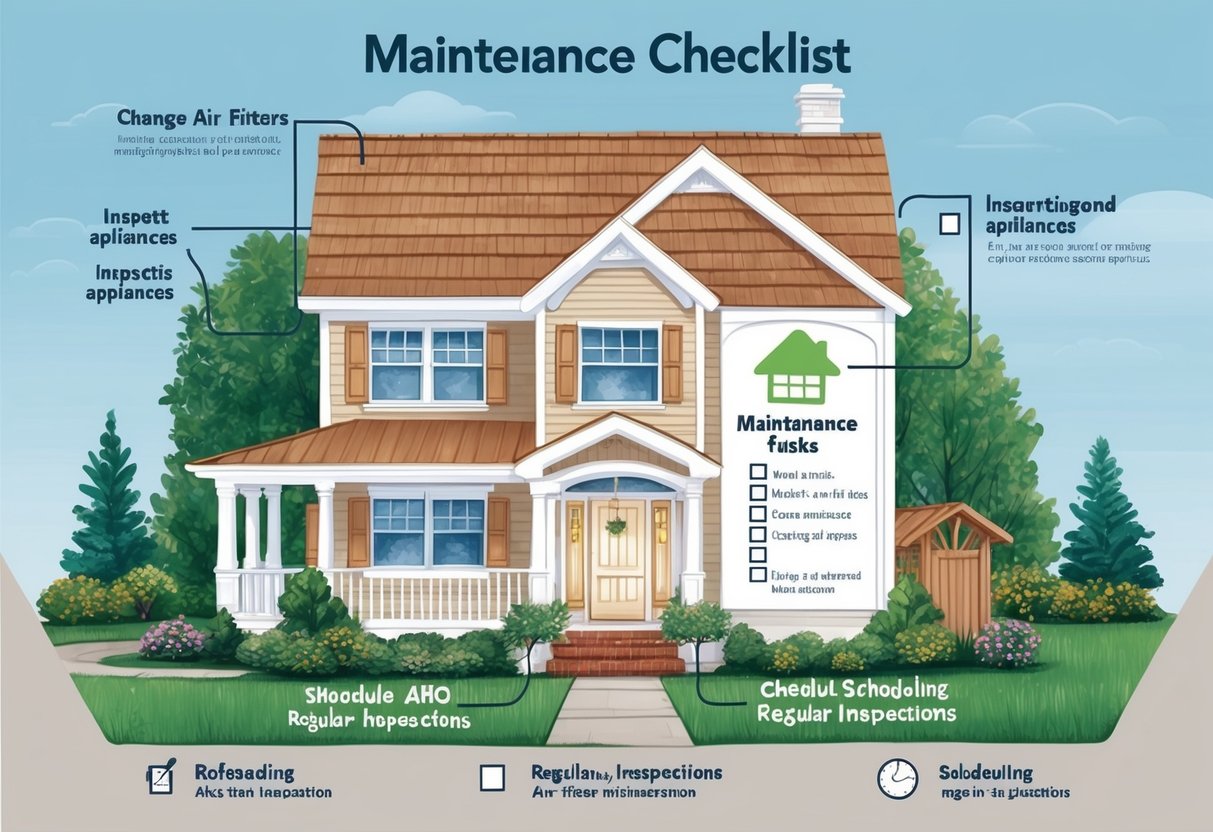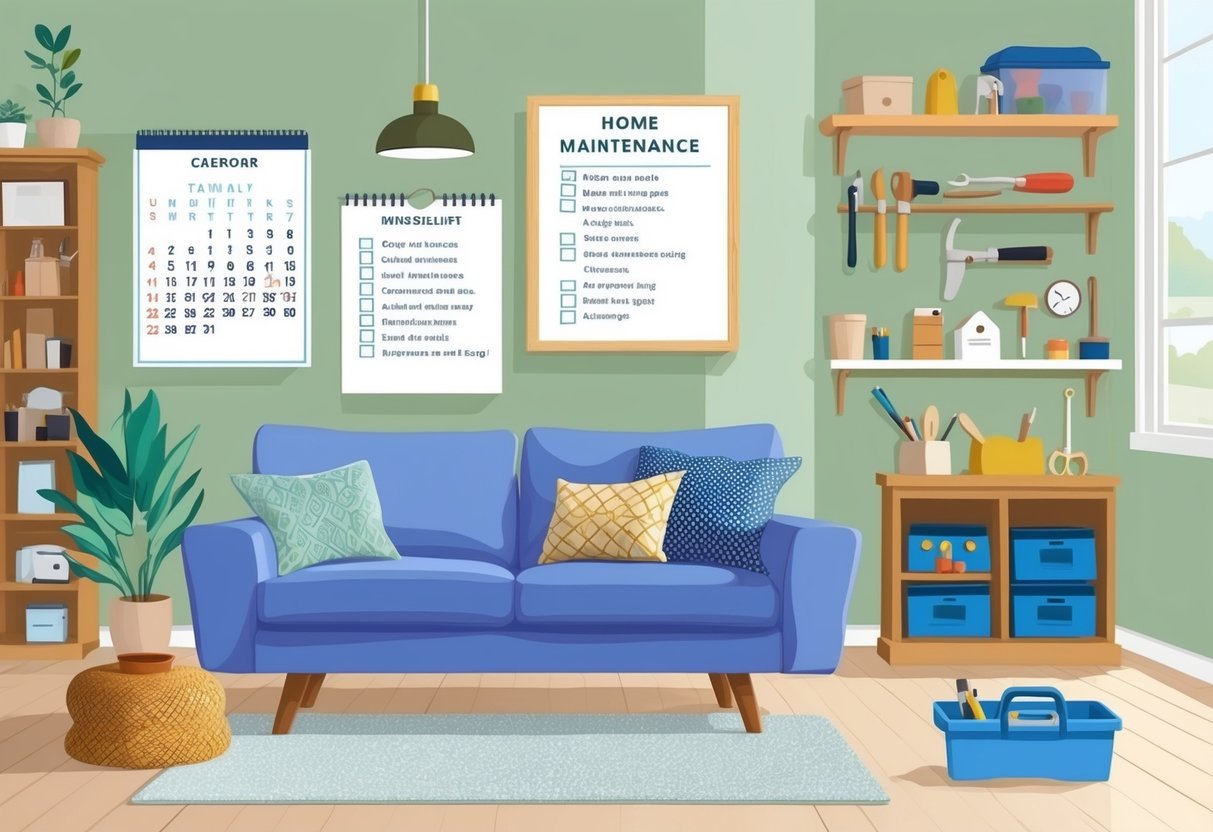
Maximizing Savings Through Preventative Maintenance

Proactive home maintenance reduces overall expenses and helps avoid unplanned repair bills. Timely care and regular checks on essential systems can keep utility costs low and extend the lifespan of valuable household equipment and infrastructure.
Monitoring Utility Usage
Consistently tracking utility consumption is one of the most effective ways to save money. Smart thermostats, water leak detectors, and energy monitors can help identify sudden spikes in gas, electricity, or water use.
By noticing unusual patterns, homeowners can address minor issues such as leaking faucets or inefficient HVAC systems before they escalate. Regularly reviewing monthly utility bills helps pinpoint areas where small changes make a big difference.
For example, sealing window drafts and adding attic insulation can reduce heating and cooling costs. Swapping out incandescent bulbs for LEDs and unplugging devices not in use further lowers expenses.
A simple checklist can be useful:
| Utility | Action Item | Frequency |
|---|---|---|
| Water | Check for leaks | Monthly |
| Electricity | Review energy usage | Monthly |
| Gas | Inspect appliance efficiency | Seasonally |
Reducing Unnecessary Costs
Preventative maintenance minimizes costly repairs by fixing minor problems early. Cleaning gutters, servicing HVAC filters, and caulking windows are low-cost actions that prevent water damage, mold, and energy loss.
Many tasks can be tackled by homeowners using basic tools, saving the expense of hiring contractors. Saving leftover paint and building supplies from past projects can reduce future purchase needs.
It’s also possible to cut costs by using recycled or “oops” paint and renting rarely used equipment instead of buying. These approaches are highlighted in resources such as Bankrate’s tips for home maintenance savings.
A seasonal maintenance checklist helps avoid neglect and the high prices that come with emergency repairs. Scheduling simple recurring tasks like clearing gutters and checking caulk keeps small issues manageable and household expenses predictable.
Extending the Life of Your Home’s Systems
Regular maintenance extends the working life of major home systems like HVAC units, plumbing, and roofing. Systems that receive routine care are less likely to experience breakdowns, which helps save money on large replacement costs.
For example, changing HVAC filters on a set schedule improves efficiency and reduces strain on the unit. Scheduling annual inspections and cleaning for appliances and mechanical systems reveals wear before it leads to failure.
Properly maintained roofs and siding last longer, reducing the frequency of major renovations. Consistent attention also keeps warranty coverage valid, meaning homeowners may avoid out-of-pocket expenses if covered failures occur.
Frequently Asked Questions

Preventative home maintenance planning relies on regular scheduling, prioritizing necessary repairs, and understanding seasonal needs. Homeowners can use checklists and budgeting strategies to keep their property in good condition year-round and avoid expensive surprises.
What are the essential tasks to include in an annual home maintenance checklist?
Key tasks include inspecting roofing for damage, cleaning gutters, servicing the HVAC system, checking for plumbing leaks, and sealing windows and doors. Annual maintenance often focuses on systems that protect the structure, such as inspecting the foundation for cracks and ensuring electrical components are functioning safely.
For more guidance, refer to this ultimate home maintenance checklist for every season.
How often should each home maintenance task be performed to ensure cost-effective prevention?
Some maintenance tasks require monthly attention, like replacing HVAC filters and testing smoke alarms. Others, such as servicing major appliances or pressure-washing exterior surfaces, can be done annually.
Seasonal tasks involving yard maintenance or assessing weather-related damage help prevent costly repairs. Maintenance schedules may vary based on the age and location of the home.
More detail can be found on home maintenance frequencies.
What is the best way to budget for home maintenance costs throughout the year?
Experts recommend setting aside 1-3% of a home’s purchase price each year for upkeep and repairs. Splitting expenses evenly over twelve months can help smooth out costs.
Using a dedicated home maintenance savings account ensures funds are available when needed. Review monthly statements and update the budget annually to match changes in maintenance needs.
Further budgeting tips are available in this homeowner’s maintenance checklist.
How can homeowners incorporate seasonal maintenance tasks into their preventative schedules?
Using a calendar or digital reminders is an efficient way to space out tasks linked to weather changes, like winterizing plumbing before the first freeze or cleaning gutters each spring and fall. Creating separate checklists for each season helps ensure nothing is overlooked.
Step-by-step seasonal checklists can help keep tasks organized, as suggested in this annual plan.
What are the key components of a monthly home maintenance plan?
Monthly plans typically focus on smaller, routine tasks that keep systems running efficiently. These can include checking water softener salt levels, cleaning range hoods, inspecting fire extinguishers, and verifying outdoor lighting.
Quick visual inspections of basements or crawl spaces can catch developing problems early, minimizing repair costs.
Can you create a comprehensive maintenance schedule tailored to different types of homes?
A thorough plan considers factors such as property age, local climate, and the presence of specific systems like basements or septic tanks.
Newer homes may require less frequent attention.
Older properties need more regular inspections for structural and mechanical concerns.
Personalized maintenance checklists, such as those recommended by PreFix, provide tailored guidance for various home types.